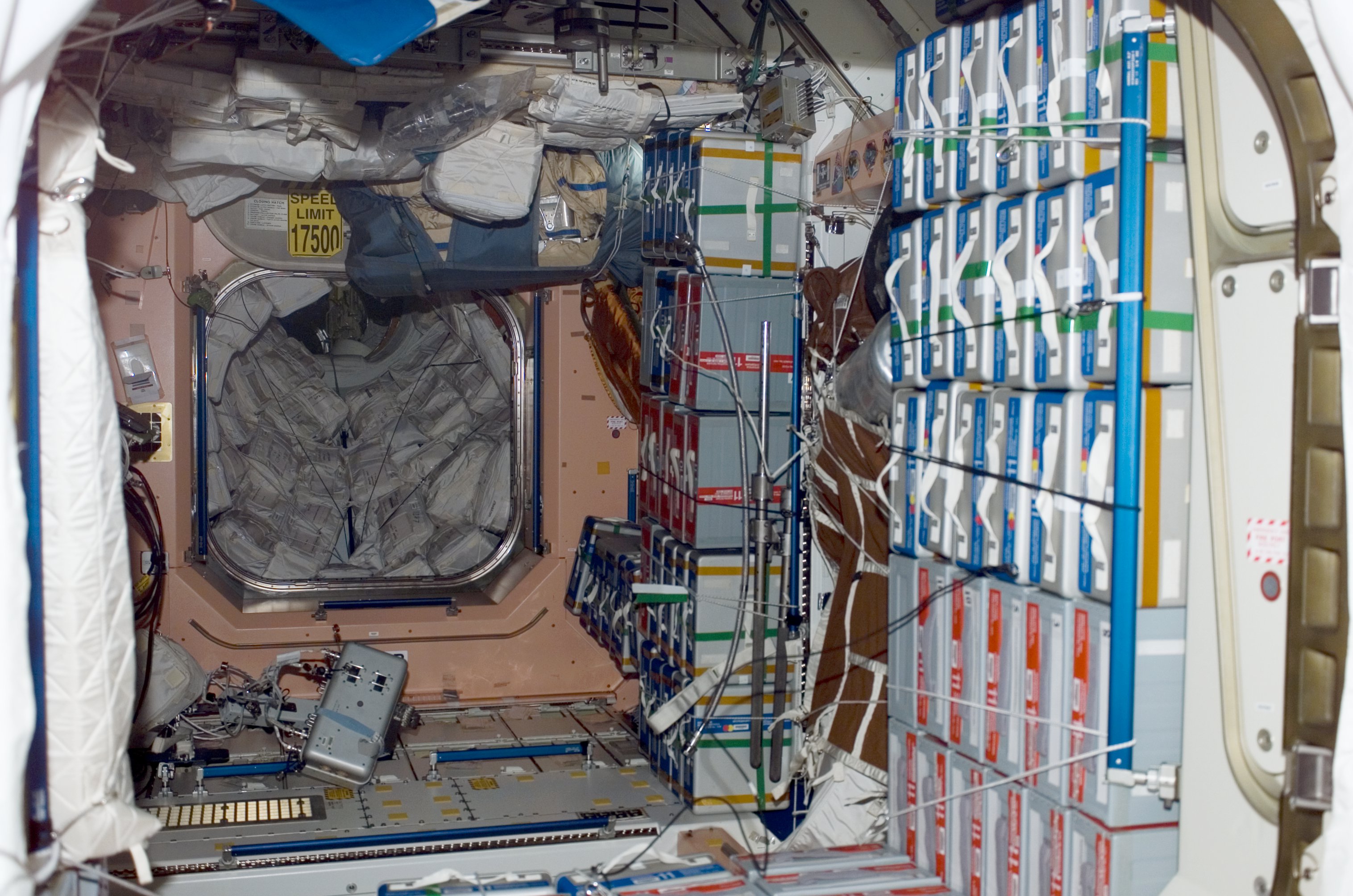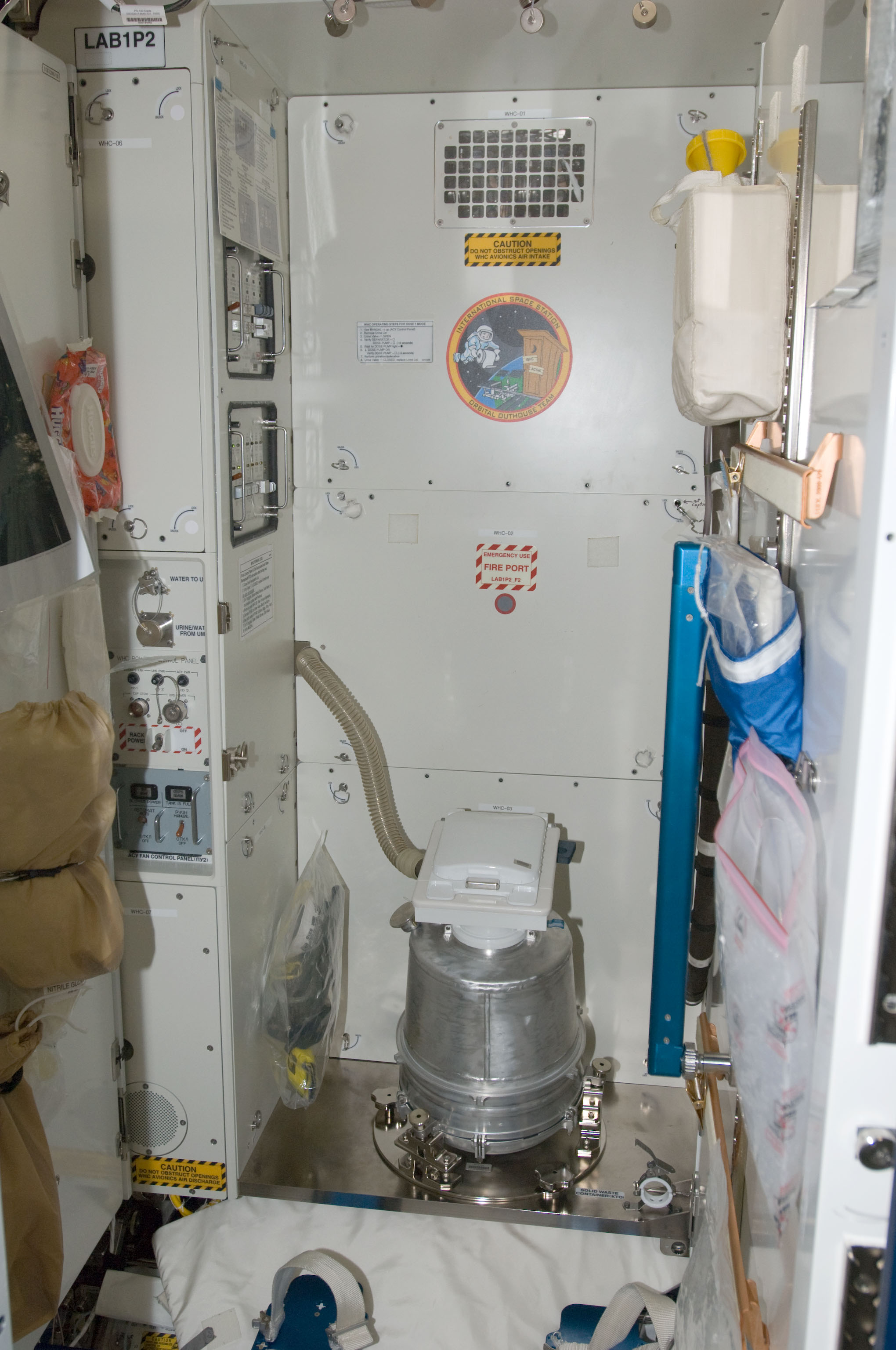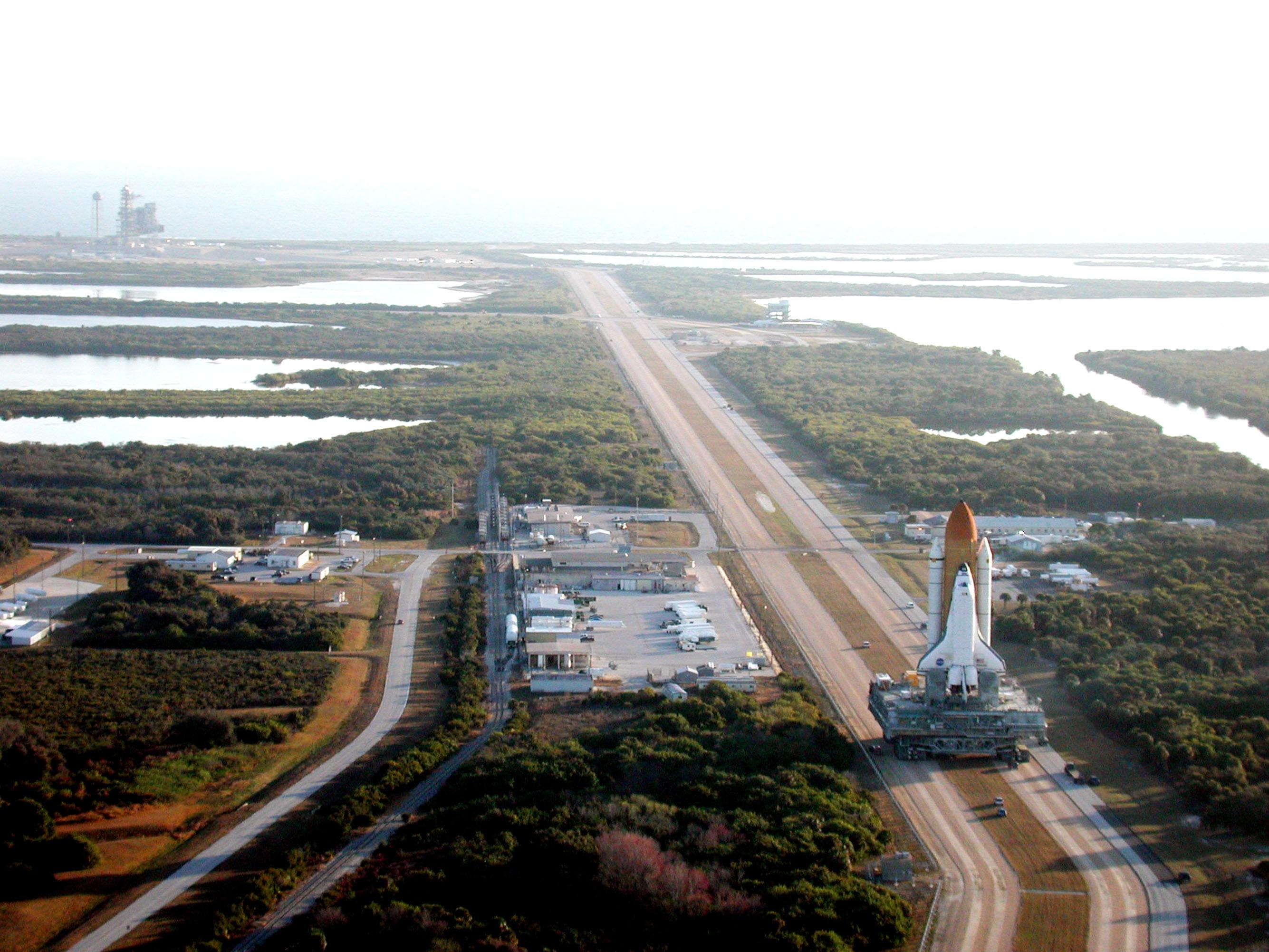 |
Unity Module
''Unity'', also known as Node 1, is the first U.S.-built component of the International Space Station (ISS). This cylindrical module, constructed of steel by Boeing for NASA, serves as the critical link between the orbiting laboratory's Russian Orbital Segment and US Orbital Segment. ''Unity'' was launched on 4 December 1998, aboard the on STS-88. Two days later it was berthed to the previously launched ''Zarya'' module, marking the first connection between ISS components. Its six Common Berthing Mechanism (CBM) locations ( forward, aft, port, starboard, zenith, and nadir) facilitate connections to other modules. At launch, two CBM locations were fitted with Pressurized Mating Adapters (PMA), one of which enabled the mating with ''Zarya''. Measuring in diameter and in length, ''Unity'' was built at NASA's Marshall Space Flight Center. It is the first of three connecting modules, joined by ''Harmony'' and ''Tranquility''. Launch and initial berthing ''Unity'' (with it ... [...More Info...] [...Related Items...] OR: [Wikipedia] [Google] [Baidu] |
 |
Zarya (ISS Module)
''Zarya'' (), also known as the ''Functional Cargo Block'' (), is the inaugural component of the International Space Station (ISS). Launched on 20 November 1998 atop a Proton-K rocket, the module would serve as the ISS's primary source of power, propulsion, and guidance during its early years. As the station has grown, ''Zarya''s role has transitioned primarily to storage, both internally and in its external fuel tanks. A descendant of the TKS spacecraft used in the ''Salyut'' programme, ''Zarya'' was built in Russia but its construction was financed by the United States. Its name, meaning "sunrise," symbolizes the beginning of a new era of international space cooperation. Construction The Zarya design was originally intended as a module for the Russian '' Mir'' space station, but was not flown as of the end of the Mir program. A FGB cargo block was incorporated as an upper stage engine into the Polyus spacecraft, flown (unsuccessfully) on the first Energia launch.B. Hen ... [...More Info...] [...Related Items...] OR: [Wikipedia] [Google] [Baidu] |
 |
Tranquility (ISS Module)
''Tranquility'', also known as Node 3, is a module of the International Space Station (ISS). It contains environmental control systems, life support systems, a toilet, exercise equipment, and an observation Cupola (ISS module), cupola. The European Space Agency (ESA) and the Italian Space Agency (ASI) had ''Tranquility'' manufactured by Thales Alenia Space. A ceremony on 20 November 2009 transferred ownership of the module to NASA. On 8 February 2010, NASA launched the module on the Space Shuttle's STS-130 mission. Design and manufacturing ''Tranquility'' was built within the ESA-NASA ISS bartering system. ESA committed to build and fund both Harmony (ISS module), ''Harmony'' and ''Tranquility'' as well as the Automated Transfer Vehicle, ATV in order to use NASA ISS facilities, fly astronauts on the Shuttle and for other ISS services. ESA teamed up with the Italian Space Agency (ASI) to Manufacturing of the International Space Station, manufacture both ''Harmony'' and ''T ... [...More Info...] [...Related Items...] OR: [Wikipedia] [Google] [Baidu] |
|
STS-104
STS-104 was a Space Shuttle mission to the International Space Station (ISS) flown by Space Shuttle ''Atlantis''. Its primary objectives were to install the ''Quest'' Joint Airlock and help perform maintenance on the International Space Station. It launched on 12 July 2001 at 09:04 UTC, and returned to Earth without incident after successful docking, equipment installation, and three spacewalks. Crew Crew seat assignments Mission highlights The primary purpose of the flight was to deliver and install the ''Quest'' airlock. The Joint Airlock is a pressurized flight element consisting of two cylindrical chambers attached end-to-end by a connecting bulkhead and hatch. Once installed and activated, the ISS airlock became the primary path for International Space Station space walk entry and departure for U.S. spacesuits, which are known as Extravehicular Mobility Units, or EMUs. In addition, the Joint Airlock is designed to support the Russian Orlan spacesuit for EVA acti ... [...More Info...] [...Related Items...] OR: [Wikipedia] [Google] [Baidu] |
|
 |
Quest Joint Airlock
The ''Quest'' Joint Airlock is the primary airlock for the International Space Station. ''Quest'' was designed to host spacewalks with both Extravehicular Mobility Unit (EMU) spacesuits and Orlan space suits. The airlock was launched on STS-104 on July 14, 2001. It was attached to the starboard CBM of the '' Unity'' during STS-104. The four external HP tanks were installed in pairs on two occasions. Before ''Quest'' was attached, Russian spacewalks using Orlan suits could only be done from the '' Zvezda'' service module, and American spacewalks using EMUs were only possible when a Space Shuttle was docked, allowing the astronauts to use the Shuttle's airlock, located in its payload bay. The arrival of ''Pirs'' docking compartment on September 16, 2001, provided another airlock from which Orlan spacewalks can be conducted. Requirements ''Quest'' was necessary because American suits (EMUs) will not fit through a Russian airlock hatch and have different components, fitt ... [...More Info...] [...Related Items...] OR: [Wikipedia] [Google] [Baidu] |
 |
STS-92
STS-92 was a Space Shuttle mission to the International Space Station (ISS) flown by Space Shuttle '' Discovery''. STS-92 marked the 100th mission of the Space Shuttle and Discovery's 28th flight. It was launched from Kennedy Space Center, Florida, 11 October 2000. Crew Spacewalks ;EVA 1 *Personnel: Chiao and McArthur *Start: 15 October 2000 – 14:27 UTC *End: 15 October 2000 – 20:55 UTC *Duration: 6 hours, 28 minutes ;EVA 2 *Personnel: López-Alegría and Wisoff *Start: 16 October 2000 – 14:15 UTC *End: 16 October 2000 – 21:22 UTC *Duration: 7 hours, 7 minutes ;EVA 3 *Personnel: Chiao and McArthur *Start: 17 October 2000 – 14:30 UTC *EVA 3 End: 17 October 2000 – 21:18 UTC *Duration: 6 hours, 48 minutes ;EVA 4 *Personnel: López-Alegría and Wisoff *Start: 18 October 2000 – 15:00 UTC *End: 18 October 2000 – 21:56 UTC *Duration: 6 hours, 56 minutes Crew seat assignments Mission highlights STS-92 was an ISS assembly flight that brought the Z1 truss, ... [...More Info...] [...Related Items...] OR: [Wikipedia] [Google] [Baidu] |
 |
Integrated Truss Structure
The Integrated Truss Structure (ITS) of the International Space Station (ISS) consists of a linear arranged sequence of connected trusses on which various unpressurized components are mounted such as logistics carriers, radiators, ISS Solar Arrays, solar arrays, and other equipment. It supplies the ISS with a Spacecraft bus, bus architecture. It is approximately 110 meters long and is made from aluminium and stainless steel. Truss components All truss components were named after their planned end-positions: Z for zenith, S for starboard and P for port, with the number indicating the sequential position. The S0 truss might be considered a misnomer, as it is mounted centrally on the zenith position of ''Destiny'' and is neither starboard nor port side. Manufacturing ISS truss segments were Manufacturing of the International Space Station, fabricated by Boeing in its facilities at Huntington Beach, California (formerly McDonnell Douglas), Michoud Assembly Facility in New Orlean ... [...More Info...] [...Related Items...] OR: [Wikipedia] [Google] [Baidu] |
 |
STS-98
STS-98 was a 2001 Space Shuttle mission to the International Space Station (ISS) flown by Space Shuttle Atlantis, Space Shuttle '' Atlantis''. It was the first human spaceflight launch of the 21st century. STS-98 delivered to the station the Destiny (ISS module), ''Destiny'' Laboratory Module. All mission objectives were completed and the shuttle reentered and landed safely at Edwards Air Force Base on 20 February 2001, after twelve days in space, six of which were spent docked to the ISS. Crew Crew seat assignments Launch attempts Mission highlights The crew continued the task of building and enhancing the International Space Station by delivering the U.S. Destiny Laboratory Module, ''Destiny'' Laboratory Module. It was the first NASA lab to be permanently used since the days of Skylab nearly three Decade, decades earlier. It was manufactured by Boeing at the Michoud Assembly Facility and the Marshall Space Flight Center in 1997. Upon transport to Kennedy Space Cente ... [...More Info...] [...Related Items...] OR: [Wikipedia] [Google] [Baidu] |
|
Destiny (ISS Module)
The ''Destiny'' module, also known as the U.S. Lab, is the primary operating facility for United States, U.S. research payloads aboard the International Space Station (ISS). It was berthed to the forward port of the ''Unity (ISS module), Unity'' module and activated over a period of five days in February, 2001. ''Destiny'' is NASA's first permanent operating orbital research station since Skylab was vacated in February 1974. The Boeing Company began construction of the research laboratory in 1995 at the Michoud Assembly Facility and then the Marshall Space Flight Center in Huntsville, Alabama, Huntsville, Alabama. ''Destiny'' was shipped to the Kennedy Space Center in Florida in 1998, and was turned over to NASA for pre-launch preparations in August 2000. It launched on February 7, 2001 aboard the on STS-98. Astronauts work inside the pressurized facility to conduct research in numerous scientific fields. Scientists throughout the world would use the results to enhance their ... [...More Info...] [...Related Items...] OR: [Wikipedia] [Google] [Baidu] |
|
|
Kazakhstan
Kazakhstan, officially the Republic of Kazakhstan, is a landlocked country primarily in Central Asia, with a European Kazakhstan, small portion in Eastern Europe. It borders Russia to the Kazakhstan–Russia border, north and west, China to the China–Kazakhstan border, east, Kyrgyzstan to the Kazakhstan–Kyrgyzstan border, southeast, Uzbekistan to the Kazakhstan–Uzbekistan border, south, and Turkmenistan to the Kazakhstan–Turkmenistan border, southwest, with a coastline along the Caspian Sea. Its capital is Astana, while the largest city and leading cultural and commercial hub is Almaty. Kazakhstan is the world's List of countries and dependencies by area, ninth-largest country by land area and the largest landlocked country. Steppe, Hilly plateaus and plains account for nearly half its vast territory, with Upland and lowland, lowlands composing another third; its southern and eastern frontiers are composed of low mountainous regions. Kazakhstan has a population of 20 mi ... [...More Info...] [...Related Items...] OR: [Wikipedia] [Google] [Baidu] |
|
 |
Baikonur Cosmodrome
The Baikonur Cosmodrome is a spaceport operated by Russia within Kazakhstan. Located in the Kazakh city of Baikonur, it is the largest operational space launch facility in terms of area. All Russian Human spaceflight, crewed spaceflights are launched from Baikonur. Situated in the Kazakh Steppe, some above sea level, it is to the east of the Aral Sea and north of the Syr Darya. It is close to Töretam, a station on the Trans-Aral Railway. Russia, as the official successor state to the Soviet Union, has retained control over the facility since 1991; it originally assumed this role through the post-Soviet Commonwealth of Independent States (CIS), but ratified an agreement with Kazakhstan in 2005 that allowed it to lease the spaceport until 2050. It is jointly managed by Roscosmos and the Russian Aerospace Forces. In 1955, the Ministry of Defense (Soviet Union), Soviet Ministry of Defense issued a decree and founded the Baikonur Cosmodrome. It was originally built as the chief ... [...More Info...] [...Related Items...] OR: [Wikipedia] [Google] [Baidu] |
 |
Launch Vehicle
A launch vehicle is typically a rocket-powered vehicle designed to carry a payload (a crewed spacecraft or satellites) from Earth's surface or lower atmosphere to outer space. The most common form is the ballistic missile-shaped multistage rocket, but the term is more general and also encompasses vehicles like the Space Shuttle. Most launch vehicles operate from a launch pad, supported by a missile launch control center, launch control center and systems such as vehicle assembly and fueling. Launch vehicles are engineered with advanced aerodynamics and technologies, which contribute to high operating costs. An orbital spaceflight, orbital launch vehicle must lift its payload at least to the boundary of space, approximately and accelerate it to a horizontal velocity of at least . Suborbital spaceflight, Suborbital vehicles launch their payloads to lower velocity or are launched at elevation angles greater than horizontal. Practical orbital launch vehicles use chemical prope ... [...More Info...] [...Related Items...] OR: [Wikipedia] [Google] [Baidu] |
|
Proton (rocket Family)
Proton (, formal designation: UR-500) is an expendable launch system used for both commercial and Russian government space launches. The first Proton rocket was launched in 1965. Modern versions of the launch system are still in use , making it one of the most successful heavy boosters in the history of spaceflight. The components of all Protons are manufactured in the Khrunichev State Research and Production Space Center factory in Moscow and Chemical Automatics Design Bureau in Voronezh, then transported to the Baikonur Cosmodrome, where they are assembled at Site 91 to form the launch vehicle. Following payload integration, the rocket is then brought to the launch pad horizontally by rail, and raised into vertical position for launch. As with many Soviet rockets, the names of recurring payloads became associated with the launch vehicle itself. The moniker "Proton" originates from a series of similarly named scientific satellites, which were among the rocket's first payloads ... [...More Info...] [...Related Items...] OR: [Wikipedia] [Google] [Baidu] |